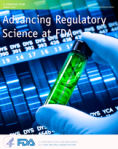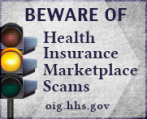 On July 9 2012, the Food and Drug Administration Safety and Innovation Act (FDASIA) became law in the U.S. Why is this important? It is important because the law reauthorizes and extends the U.S. FDA’s authority to collect user fees from industry to fund reviews of innovator drugs, medical devices, generic drugs and bio-similar biologics.
On July 9 2012, the Food and Drug Administration Safety and Innovation Act (FDASIA) became law in the U.S. Why is this important? It is important because the law reauthorizes and extends the U.S. FDA’s authority to collect user fees from industry to fund reviews of innovator drugs, medical devices, generic drugs and bio-similar biologics.
This article summarizes some of the provisions of the new law and the implications of user fees the drug development process.
The Provisions of FDASIA
As part of its regulatory responsibilities, FDA receives thousands of applications for potentially promising medical products every year. The task of reviewing these submissions falls on a large team of FDA experts, including doctors, chemists, bioengineers, and statisticians who must determine, in a timely manner, whether a proposed new product is safe and effective for patients.
The FDASIA is the fifth authorization of the Prescription Drug User Fee Act (PDUFA), which was first enacted in 1992, and the third authorization of the Medical Device User Fee Act (MDUFA), which was first enacted in 2002. CLICK HERE for details of the reauthorizations of the PDUFA and MDUFA.
According to FDA Commissioner, Margaret Hamburg, it takes steady and reliable funding provided by user fee programs such as the PDUFA and MDUFA, to maintain and support the work of this pool of experts. She views the authorization of user fee collection as a testament to the important role FDA plays daily in America’s public health, innovation, and commerce.
FDASIA also provides for two new user fee programs for generic drugs and bio-similar biologics build on the successes of these two established user fee programs. The Generic Drug User Fee Act (GDUFA) will support FDA generic drug review, in particular, address the backlog caused by increased generic drug applications, their growing complexity, and the number of generic drug facilities now located overseas. CLICK HERE for additional information on the GDUFA.
The second new user fee program, the Bio-similar User Fee Act (BsUFA), will collect fees for products under development shown to be “bio-similar to” or “interchangeable with” an innovator FDA-licensed biological product. CLICK HERE for more information about the BsUFA.
Other provisions of the FDASIA will ensure that the FDA is equipped with new tools to better combat drug shortages, ensure the safety and security of the drug supply chain and encourage drug innovation.
Some Specifics of the User Fees
Under PDUFA V, fees paid by industry will support the following:
- continued timely review of new prescription drugs,
- increase the use of standardized electronic data in product submissions,
- enhance communications with companies during drug development,
- implement a structured benefit-risk framework in drug review,
- put more focus on regulatory science, which seeks to create new tools, standards and approaches for use in assessing the safety, effectiveness, quality and performance of products, and
- advance the development of drugs for rare diseases and encourage the development of biomarkers.
The MDUFA III represents a commitment between the U.S. medical device industry and the FDA to increase the efficiency of regulatory processes in order to reduce the time it takes to bring safe and effective medical devices to the U.S. market. Specifically, in exchange for the user fees paid by industry, MDUFA III includes specific provisions for:
- Improved pre-submission process, which will allow industry request early FDA feedback on the appropriate regulatory pathway to market through this enhanced pre-submission process.
- Submission acceptance criteria, which will be used to evaluate submissions when they are received to ensure that FDA resources are focused on reviewing complete submissions.
- Commitment to interactive and informal communication between FDA staff and device applicants in order to collect appropriate additional information and meet review timelines.
- Guidance document development and publication on FDA’s website to communicate the agency’s current thinking on a topic.
- Third-party review program intended to improve the efficiency and timeliness of the FDA’s review processes for specific types of devices.
- A guidance, which focuses on factors to consider in the pre-market review process, including patient tolerance for risk, magnitude of the device’s benefit, and the availability of other treatments or diagnostic tests.
- Development of a transitional approach for the regulation of emerging diagnostics.
©Rachel Agheyisi, Report Content Writer, Regulatory Compliance Digest Blog
Filed under: FDA, PDUFA and MDUFA | Tagged: Bio-similar User Fee Act, BsUFA, drug development, FDA, FDASIA, GDUFA, Generic Drug User Fee Act, MDUFA, Medical Device User Fee Act, PDUFA, Prescription Drug User Fee Act | Leave a comment »


























